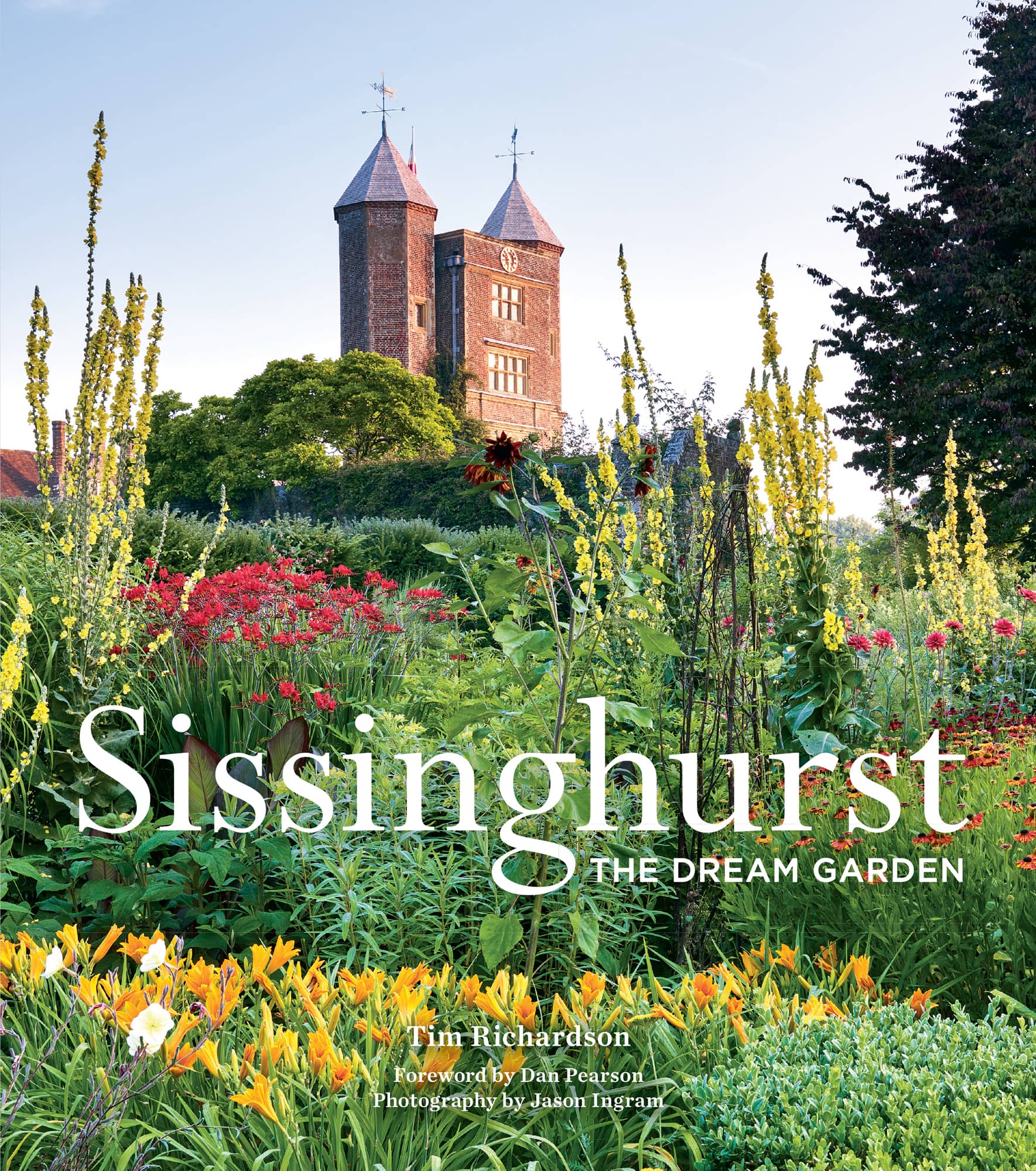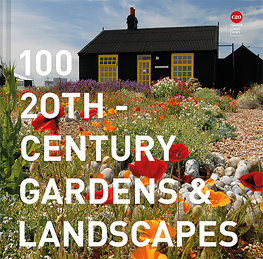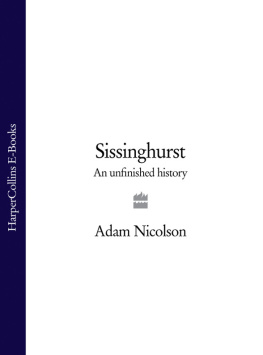Richardson Tim - Sissinghurst: the Dream Garden
Here you can read online Richardson Tim - Sissinghurst: the Dream Garden full text of the book (entire story) in english for free. Download pdf and epub, get meaning, cover and reviews about this ebook. year: 2020, publisher: Quarto Publishing Group UK, genre: Art. Description of the work, (preface) as well as reviews are available. Best literature library LitArk.com created for fans of good reading and offers a wide selection of genres:
Romance novel
Science fiction
Adventure
Detective
Science
History
Home and family
Prose
Art
Politics
Computer
Non-fiction
Religion
Business
Children
Humor
Choose a favorite category and find really read worthwhile books. Enjoy immersion in the world of imagination, feel the emotions of the characters or learn something new for yourself, make an fascinating discovery.

- Book:Sissinghurst: the Dream Garden
- Author:
- Publisher:Quarto Publishing Group UK
- Genre:
- Year:2020
- Rating:3 / 5
- Favourites:Add to favourites
- Your mark:
- 60
- 1
- 2
- 3
- 4
- 5
Sissinghurst: the Dream Garden: summary, description and annotation
We offer to read an annotation, description, summary or preface (depends on what the author of the book "Sissinghurst: the Dream Garden" wrote himself). If you haven't found the necessary information about the book — write in the comments, we will try to find it.
Sissinghurst: the Dream Garden — read online for free the complete book (whole text) full work
Below is the text of the book, divided by pages. System saving the place of the last page read, allows you to conveniently read the book "Sissinghurst: the Dream Garden" online for free, without having to search again every time where you left off. Put a bookmark, and you can go to the page where you finished reading at any time.
Font size:
Interval:
Bookmark:


Alliums and hesperis in the White Garden.

The Top Courtyard at Sissinghurst Castle, acquired in 1930 by Harold Nicolson and Vita Sackville-West.
THE DREAM GARDEN
Tim Richardson
Foreword by Dan Pearson
Photography by Jason Ingram


Lilium regale with corncockle: the exotic with the commonplace, one of Sissinghursts abiding tensions.
by Dan Pearson
I have known Sissinghurst and been a regular visitor since I was a boy in the mid seventies. My father would drive the two of us from Hampshire on an annual pilgrimage and we would walk its rarefied enclosures with notebooks in hand in the knowledge that this was somewhere special. I remember from early on the feeling of awe and then a rising disappointment that we would simply never be able to garden at this level and with such rigour, for at that point, and in the decades since, it has been a garden of horticultural excellence with perfection at every turn.
As I started to read Vita Sackville-Wests words on gardening in my teens, it became clear that the gardener I had been reading was doing something rather different from the place we walked in person. She was gardening loosely and with the feeling of the place dictating a mood that was free and to a degree decadent. Entire sections of the garden might be allowed to peak for a moment and then be gone, in the knowledge that you could turn your back and refocus elsewhere. The tapestry of polyanthus in the Nuttery, the Rose Garden, or the bulbs of the Lime Walk bloomed for a glorious interlude but were allowed to pass. It was a garden that took you into another world. It was a garden that immersed you. Vitas writings talked of a place that was first and foremost lived in by its owners and where ideas and experiments did not demand year-round perfection. But Sissinghurst then did not have the pressures and close scrutiny it has now, having over time become one of the most visited gardens in Britain. Mulleins breaking into the narrow paths could be negotiated, and roses reaching beyond their allocated space were free to reign.
A garden is ultimately the gardener and since Vitas death in 1962 Sissinghurst had become somewhere entirely different. When the National Trust took over, an inevitable tightening up eventually saw the garden reach extraordinary horticultural heights in the hands of Pam Schwerdt and Sibylle Kreutzberger, who crossed over with Vita but went on to make the garden their own and defined a new sense of expectation. The way the garden became was ultimately driven by the need to provide for the public and, in so doing, the sense of place was slowly altered. It was not a garden where you could turn your back when an area had peaked, or walk around a mullein. It was a garden that performed, but at the expense of the magic that came from it being lived in more casually under the guiding eyes of its makers.
In 2014 Troy Scott Smith, then head gardener, invited me to become a godparent to the garden. The role was one I was happy to explore, for there is nothing like getting to know a garden from behind the scenes and through the people that work there. Troy had sent me his manifesto by way of introduction. When he had applied for the role at Sissinghurst, he had talked of the need for change and to the credit of the National Trust they employed him with this vision. He wanted to recapture the sense of place that Vita had celebrated in her writings and in the home that she and Harold Nicolson had made at the castle. A garden that was inextricably linked to the buildings it surrounded and, in turn, the Kentish countryside that swept up to its walls. He saw there being a need for the place to be unlocked from the rigour that had become bound up with the gardens identity since the death of the owners. A challenge perhaps for one of the most famous gardens in the country, but for one with such good bones, a new era of excitement.
Anyone who owns or gardens a garden knows all too well that feeling of only seeing what needs doing. Sometimes it is hard to focus on the achievements or the long view, or to simply take stock and see what is happening in the here and now. My meetings with Troy took a different season every year, with notebooks and open brief to walk and talk and ponder. A second eye from an outsider is often exactly what is needed and we cultivated an openness in the discussion, where opinions may count here but not there, and where the mission is to get to the essence of things. We talked of taking the pressure off the garden and of opening it up again to the land around it. We discussed how best to relax the planting and make it breathe easy. To get back to the spirit of what Vita and Harold had envisioned for the place. It has been a slow and respectful process of change, and an ongoing one now that the garden has been passed on to Michelle Cain in her position as head gardener.
In 2018 Troy asked me to take on the role of reimagining Delos, an area that had lost its way and needed more than a light touch. Vita and Harold had been inspired by a voyage they made to the Greek island in 1935 and sought to recapture its spirit at Sissinghurst. They had made stone walls to reflect the ruggedness of the island and planted a wild place using plants from the region. This must have been a very new approach to making a garden at that point, but they were learning as they gardened and the site they chose by the Priests House was far from ideal. It faced north, with exposure to the winds from across the fields, and the heavy Weald clay could not have favoured their Mediterranean palette less and the garden ultimately failed.
My godparenting role, and the remaking of Delos, have allowed me to get under the skin of Sissinghurst, but the pages of Tim Richardsons book dig deeper to reveal Vita and Harolds unique relationship through the garden they made together a relationship that defied convention and manifested itself here in the walls and hedges and the juxtaposition of a very particular informality. It is revealed in their descriptions of the garden and the way they lived in it as a home, a blend of experimentation and daring, and a means of personal expression and partnership. In the fragile and ephemeral world they created, they captured something potent and long-lasting. A vision that has been held in place through words but, most importantly, a vision that has seduced and captivated generations of garden lovers. A garden that by its very nature has been subject to change but one that has a strong enough blueprint to have stood the test of time. 
This book was originally downloaded from sanet.st.

Font size:
Interval:
Bookmark:
Similar books «Sissinghurst: the Dream Garden»
Look at similar books to Sissinghurst: the Dream Garden. We have selected literature similar in name and meaning in the hope of providing readers with more options to find new, interesting, not yet read works.
Discussion, reviews of the book Sissinghurst: the Dream Garden and just readers' own opinions. Leave your comments, write what you think about the work, its meaning or the main characters. Specify what exactly you liked and what you didn't like, and why you think so.







